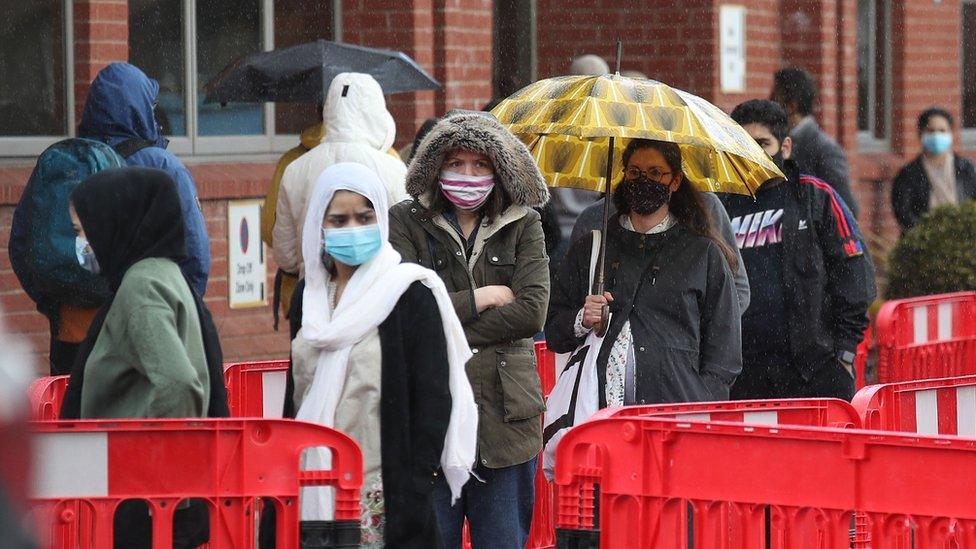Older pupils in Glasgow's Covid hotspot told to stay at home
- Published
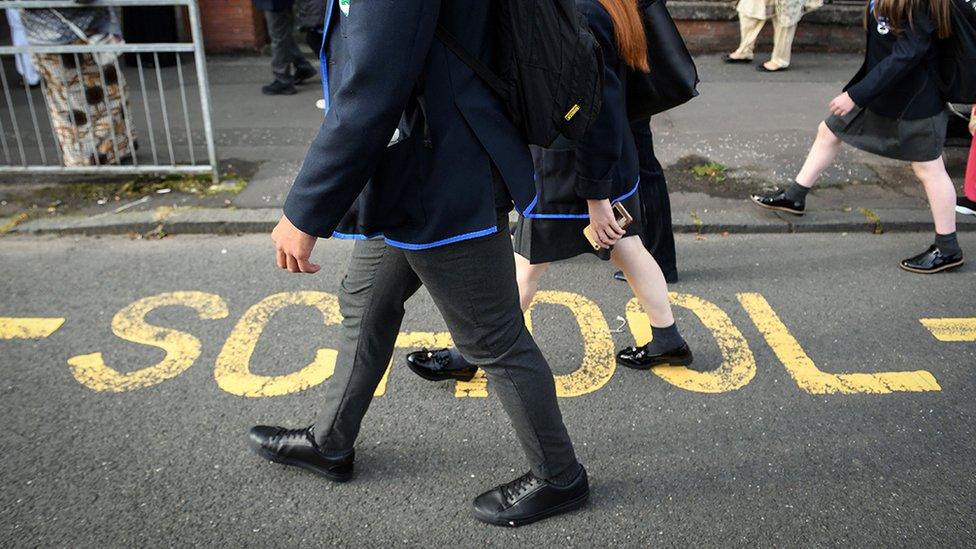
Holyrood Secondary is one of the three schools affected
Headteachers at three Glasgow schools have told parents to keep older pupils at home while health officials tackle rising coronavirus rates.
Years S4 to S6 at Shawlands Academy, Holyrood Secondary and Bellahouston Academy are affected.
Letters to families said only those doing SQA assessments should be at school between 24 May and 11 June.
Pupils in S1 to S3 are not affected except for those who are unwell or already self-isolating.
The schools are situated in the southside of Glasgow, which has been kept in level three restriction.
In a letter to Shawlands Academy parents, the head teacher, Pauline Carr, said: "In agreement with Education Directorate and other Secondary Head Teachers in our local area, all our S4-S6 pupils will be learning from home and only attending school when they have assessments or when they need to complete coursework in the building."
She added: "We understand that this situation is far from ideal and we had all hoped that the spread of infection would not increase but sadly this is not the case in our local area."
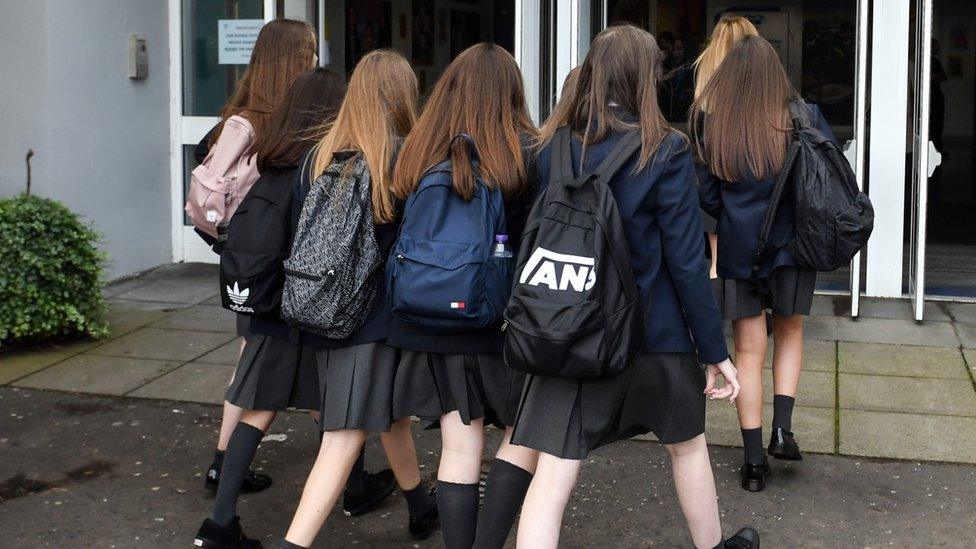
A spokeswoman for Glasgow City Council told the BBC that the additional measures only applied to the three southside schools and there were no plans to introduce similar measure in other schools in the area.
She said pupils would be studying from home for the next three weeks, but were still allowed to come into school for specific reasons.
The change was, she said, to "help reduce numbers in the school while there's an increase in community cases and reduce the risk of pupils being identified as close contacts".
Pre-pandemic, senior pupils would have been on study leave around now to allow them to prepare for upcoming exams.
But as exams have been cancelled this year in favour of other assessments, whether to offer study leave has been at the discretion of individual schools.
Some schools in the city have offered study leave, and the council stressed that these pupils would still be supported while they were at home.
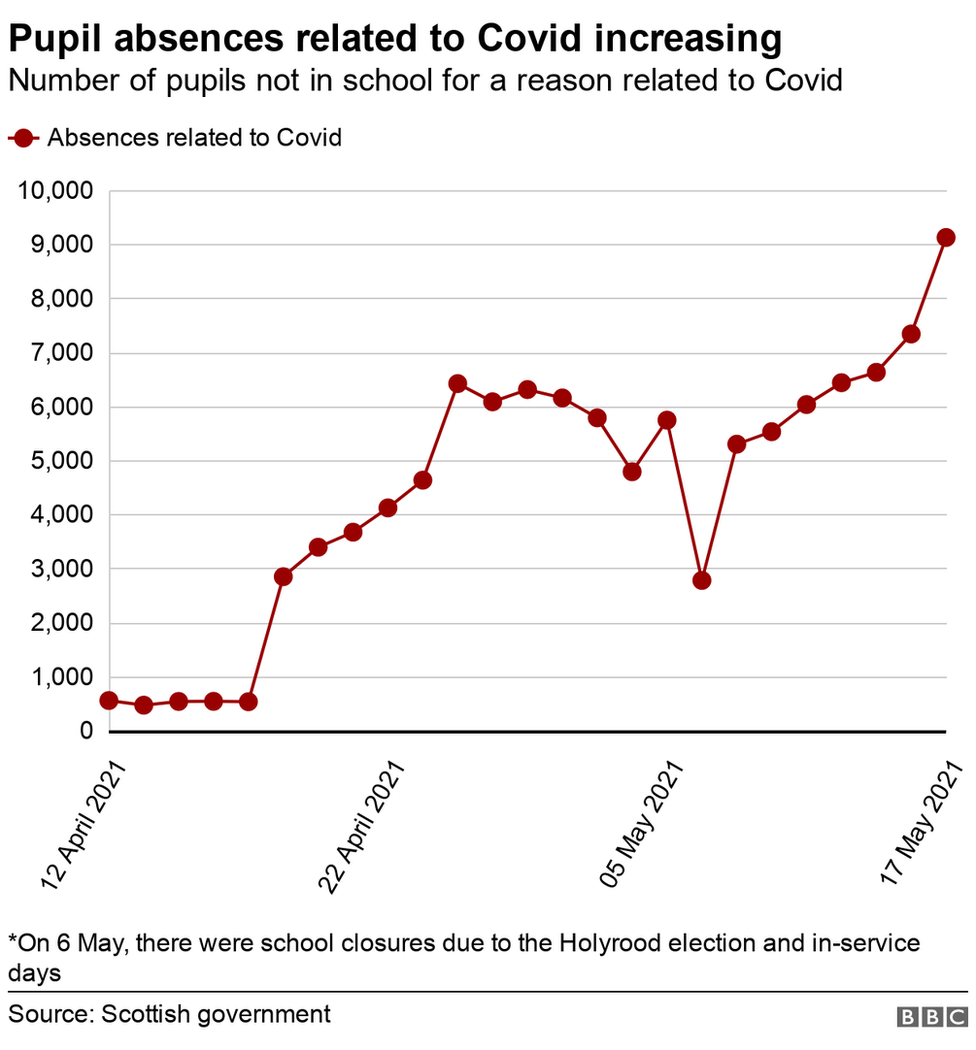
Since pupils returned to the classroom full-time after the Easter break, the number of children across Scotland who have been absent from school for a reason related to Covid-19 has been increasing.
The most recent official data, for 17 May, showed 9,124 pupils absent for a reason related to Covid - which equated to 1.3% of pupils. This compared to 8% of pupils who were not in class for a reason not related to coronavirus.
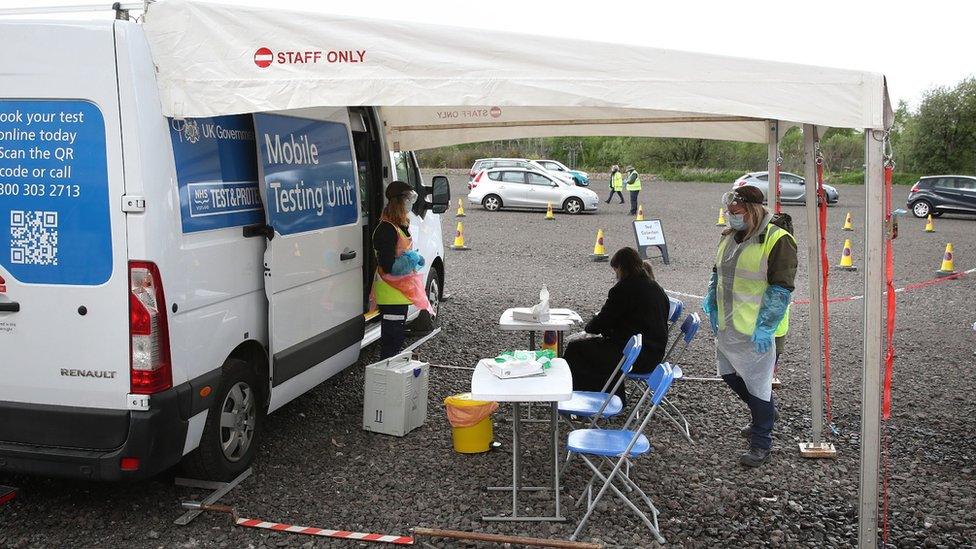
While much of the rest of Scotland moved down to either level two or level one on Monday, Scotland's biggest city has seen the stricter form of lockdown continue.
According to official statistics, external published on Thursday, the weekly case rate across Glasgow was 112.1 cases per 100,000 people on 17 May.
It showed that the outbreak is concentrated in the south side of the city, where the levels of infection appear to be much higher.
The data also showed the rate in neighbouring East Renfrewshire had reached 118.3 - meaning the infection rate had overtaken Glasgow.
The infection rate is a key indicator of which restriction level an area should be in, with upwards of 50 cases per 100,000 seen as a threshold for level three.
Moray was also kept in level three because of concerns over its infection rate, although schools have been continued to operate.
Other council areas have seen rises as well including East Renfrewshire, which currently has a rate of 101.5 cases per 100,000.
The Scottish government is expected to review which levels areas should be in on Friday.
The weekly case rate is one factor that will be considered, but others include the ability of the local NHS to cope.
Dr Christine Tait-Burkard told BBC Scotland that early indications suggested the Indian variant - which is suspected of being linked to the Glasgow outbreak - was not as infectious as originally thought.
She stated that "a large number of cases [of the Indian variant were] imported", and that the outbreaks were happening in certain areas.
Other factors to be considered which had driven case numbers in some areas, she said, were the numbers of multi-generational households, how high housing density was, high levels of deprivation in some parts, and that a lot of communities in these areas had celebrated important religious events that changed how people behaved day-to-day.
She added that there was evidence the vaccine was working against the Indian variant, with the number of people admitted to hospital only fluctuating slightly.
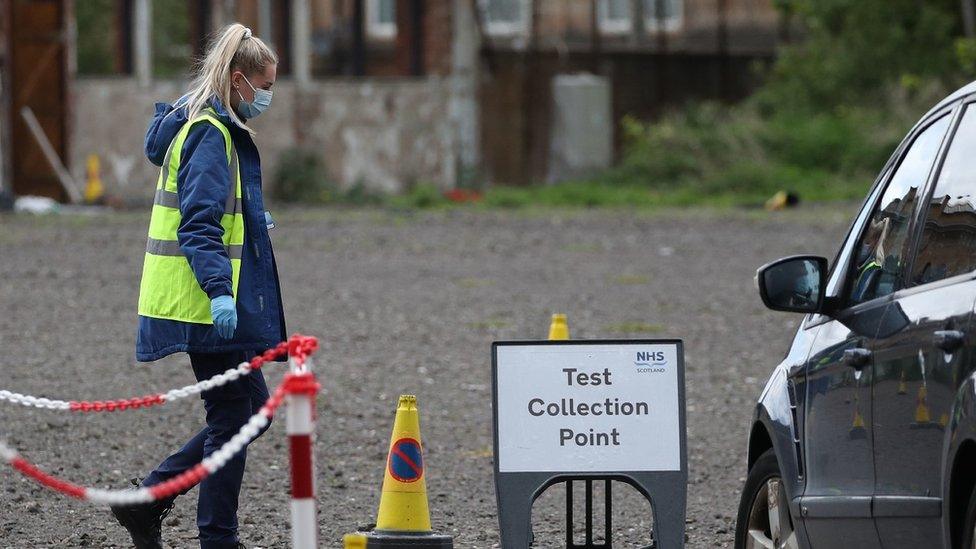
A mobile testing unit has been set up in Pollokshields
The vaccine was also preventing people from getting sick in the first place and passing the virus on, she added.
Dr Tait-Burkard said the outbreak in Glasgow was slowing down, and that surge testing was helping this.
She said whether East Renfrewshire should be moved back up to level three was "a very difficult decision at the moment".
Doing so "would certainly slow down the outbreak quicker", she said.
What's allowed in different Covid levels?
Under level three restrictions, groups of six people from two households can meet in cafés, pubs and restaurants. However, alcohol can only be served outdoors.
And six people from six households can meet outside. But, you cannot visit people in their homes.
Under level two restrictions, which East Renfrewshire is currently in, pubs and restaurants are allowed to serve alcohol inside until 22:30, and limited numbers of people can socialise indoors.
Social distancing during meetings indoors or in private gardens is no longer required in levels one and two.
Cinemas, theatres, concert halls, music venues, comedy clubs and bingo halls can have been allowed to reopen with restrictions.

LOCKDOWN RULES: What's changing and when?
GLOBAL SPREAD: How many worldwide cases are there?
CASE RATES: What's the latest in Scotland?
NEW VARIANTS: How worried should we be?

- Published20 May 2021
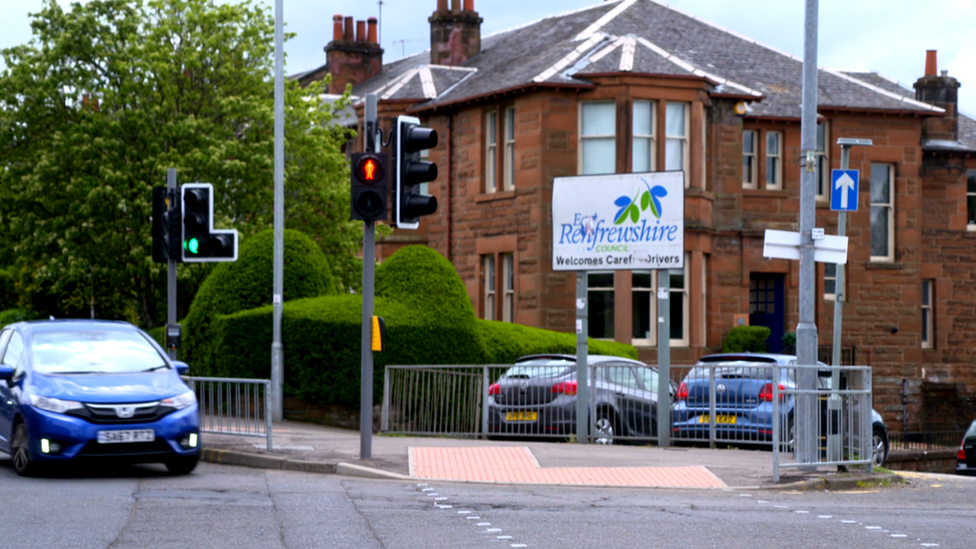
- Published19 May 2021
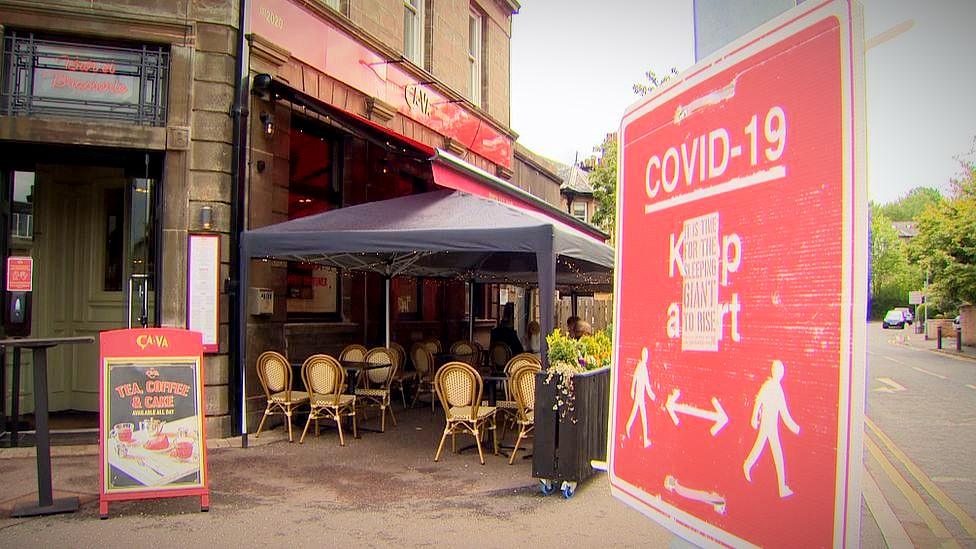
- Published18 May 2021
